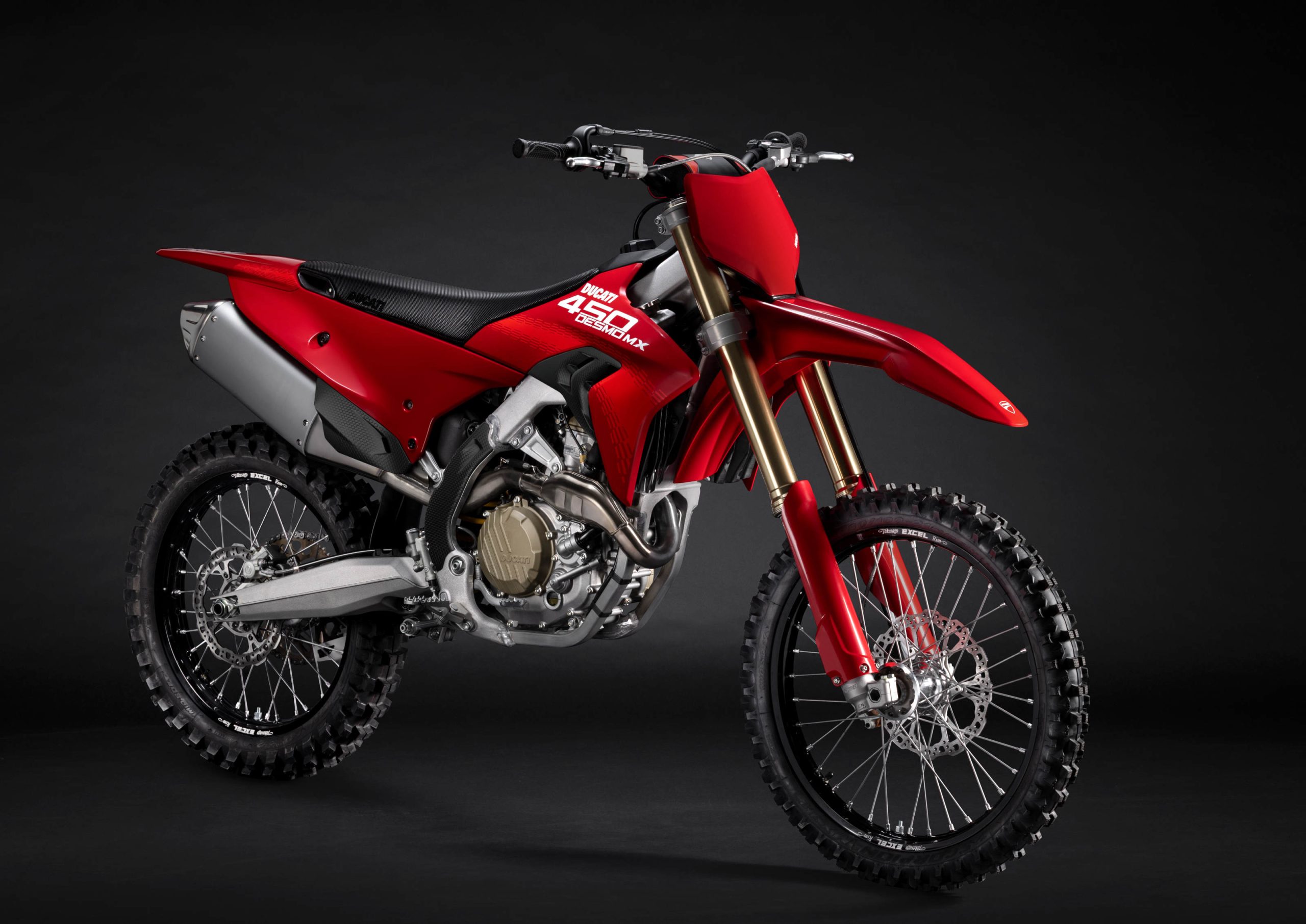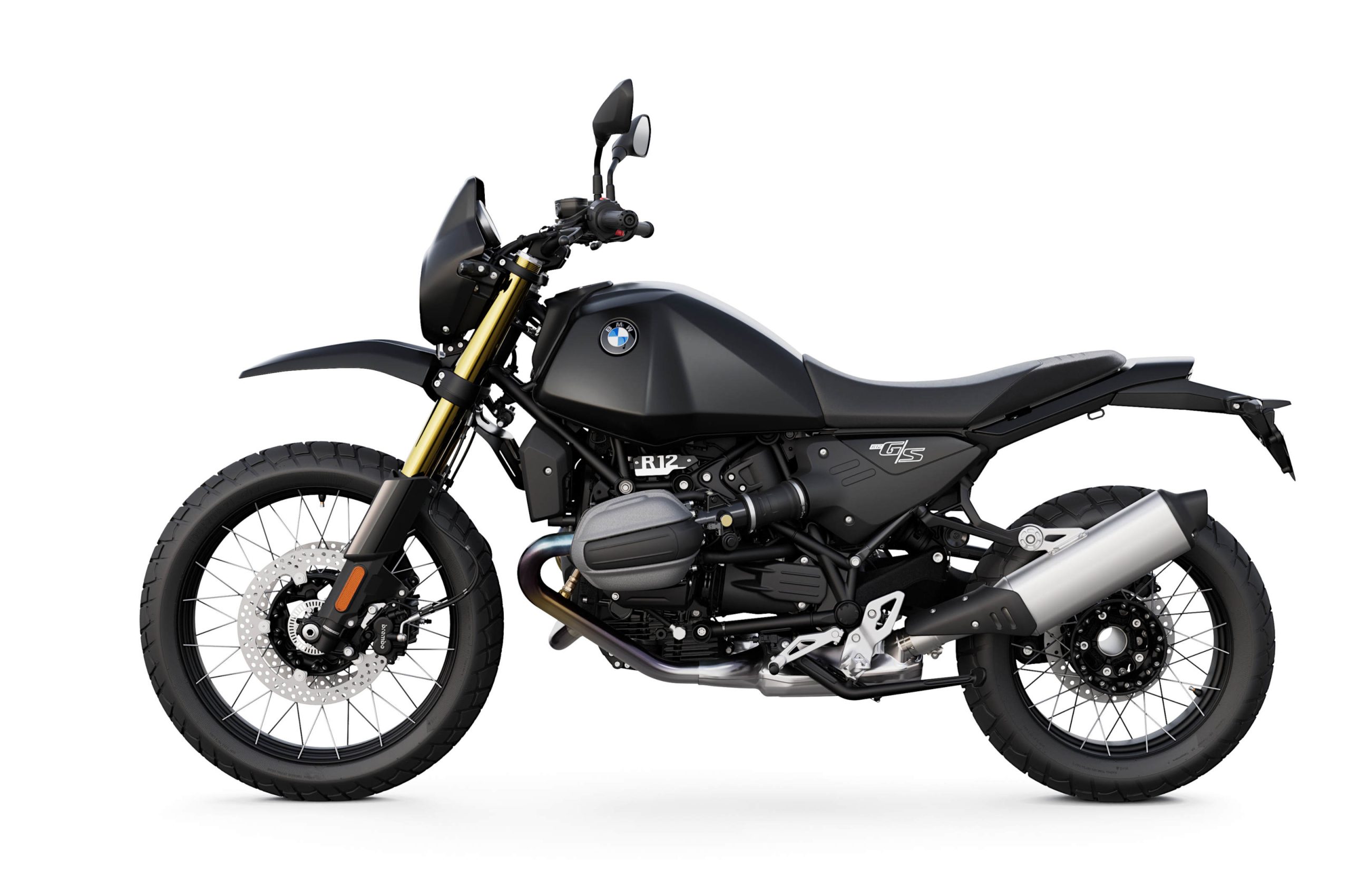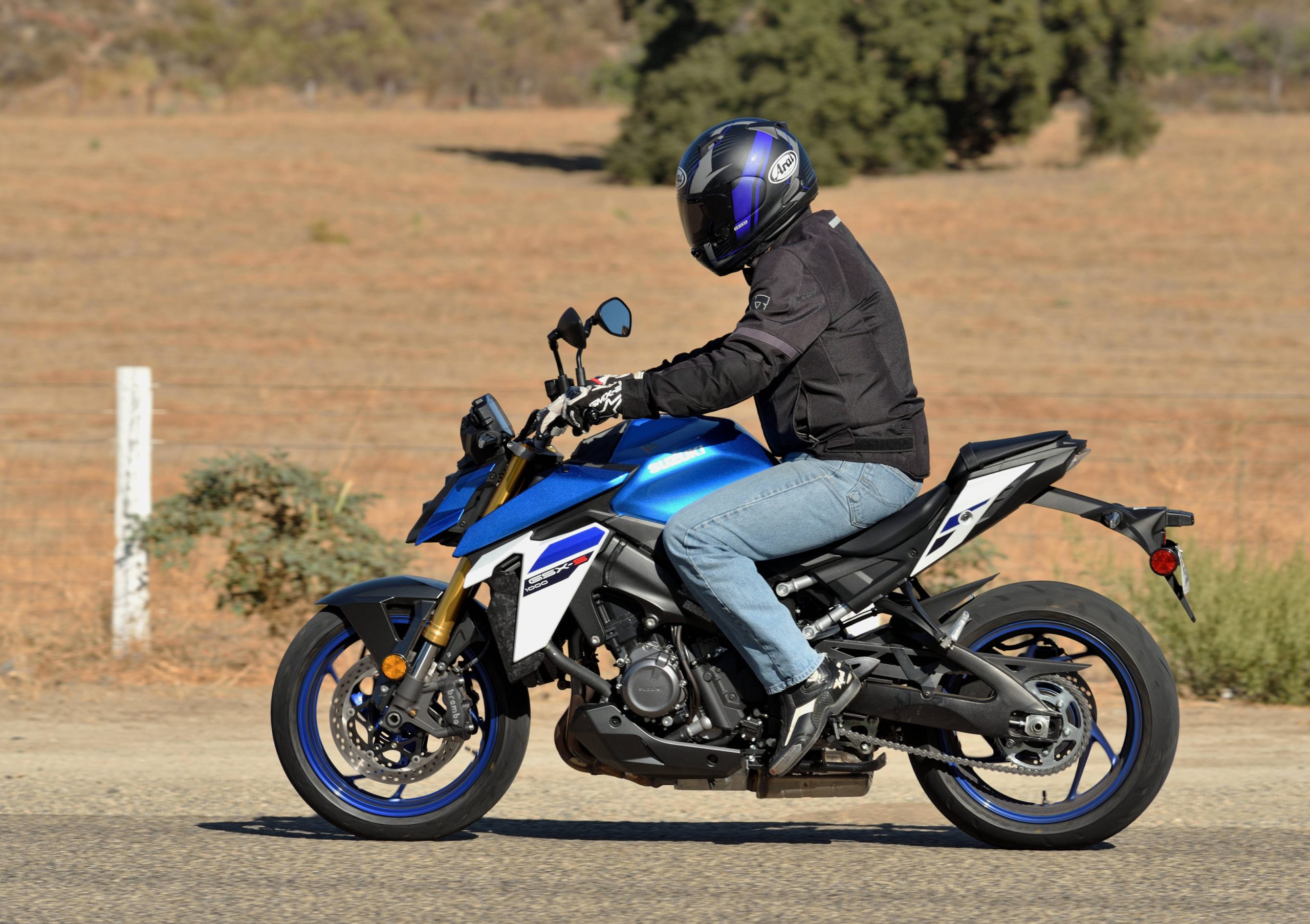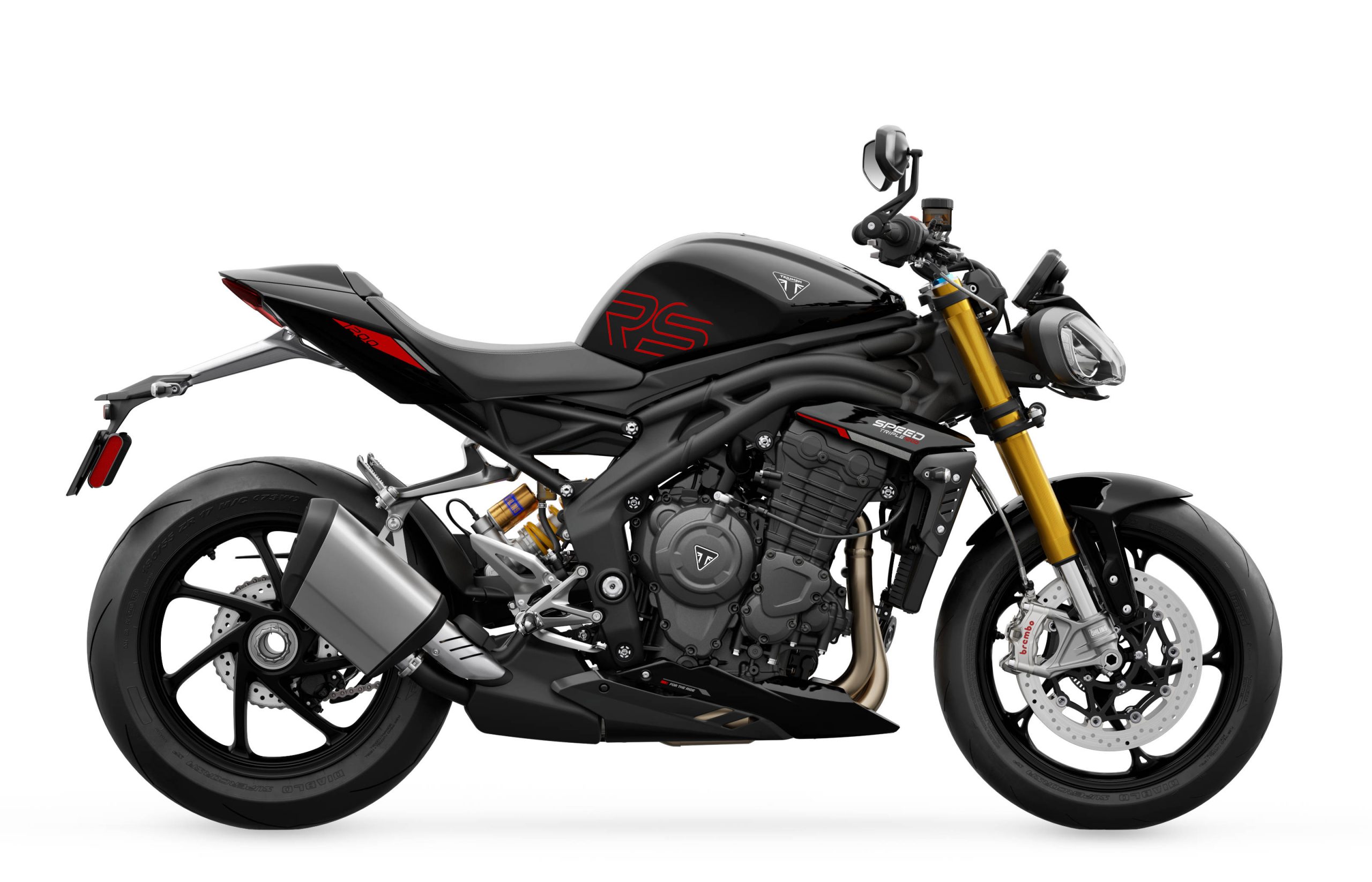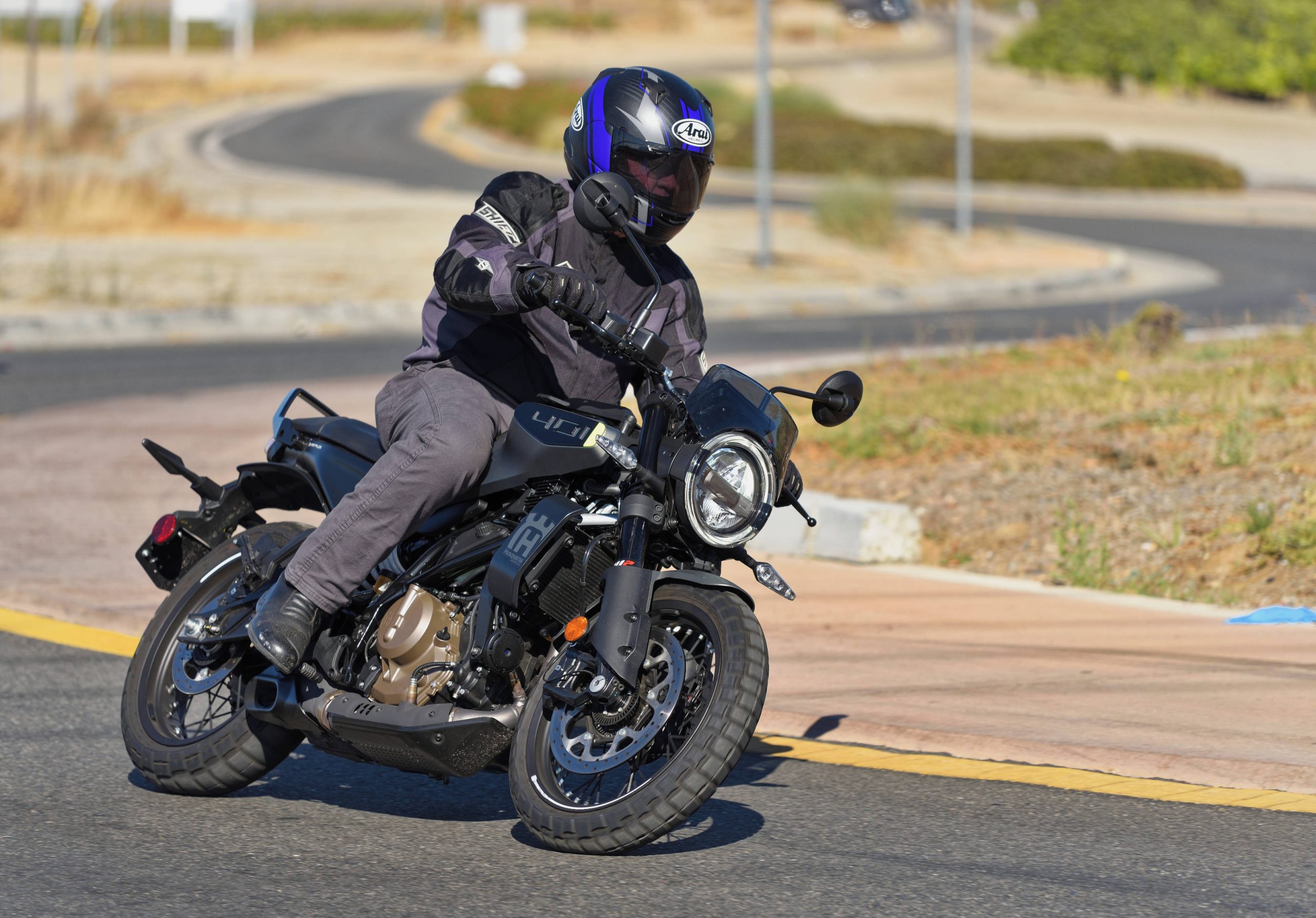Some of us don’t really want a motorcycle: we just want a motor that will propel us through time and space with as little of the accompanying infrastructure as possible. Two wheels and a handlebar, along with some kind of minimal frame, will be along for the ride. This sums up Pierre Terblanche’s original concept for the Hypermotard: a Ducati-based supermoto, a hooligan tool that strips motorcycling to its basics. The concept, shown at the Milan EICMA motorcycle show in 2005, got a lot of attention (and a “best in show” award from collected journalists) and when former Ducati CEO Frederico Minoli asked readers of his DesmoBlog if Ducati should build the bike, the overwhelmingly positive response hastened development of the already well-developed prototype. By the 2007 Milan show, the 1100 Hypermotard was on stage as an early-release 2008 model.
That bike has been a big hit over the last two model years. In fact, it accounted for 15 percent of Ducati North America’s sales, eclipsing the Monster series. Customers like the bike’s torquey motor, aggressive riding position and excellent handling. It’s even had some success racing, with an Italian spec class and a fourth-place overall finish in the 2009 Pike’s Peak hill climb. I rode the standard 1100, and while I liked the riding position (at least at lower speeds and around town), the bike still felt a little crude and heavy, almost unfinished.
Maybe somebody in Bologna agrees, because the line gets huge updates for 2010. You already know about the 796 Hyper, a $9995 version with less power and more simple suspension, but with a lot less weight and a lower seat, making it friendly to new riders. For the more experienced, meet the 2010 Hypermotard 1100 EVO and EVO SP.
“EVO” is short for “Evoluzione,” or evolution, but it’s practically a whole new model, with a new engine and chassis. Ducati realized that the old 1100 and 1100S appealed to very different customers, and the new bikes should be differentiated by more than simple bolt-on parts. The standard 1100 rider is more “into it for the lifestyle,” according to Ducati North America’s media relations manager John Paolo Canton, a guy (or long-legged gal) who wanted the bike because it looked cool and worked well in around-town and commute riding situations. The S buyer is more interested in fast canyon riding and trackdays.
So how do you make it better? Well, there isn’t a bike in the world that wouldn’t be improved by trimming weight and adding power, and the Hyper is no exception. The chassis now uses machined mounting brackets like the Desmosedici’s instead of cast ones (enabled by advanced manufacturing processes that probably save money as well), shaving four pounds right there. But the motor gets the major overhaul. The crankcases aren’t just lighter (thanks to using the Vacural casting process like the Ducati Superbikes), they are also smaller. The 848-style flywheel is 2.75 pounds lighter, the cylinder heads are new (with only one plug per cylinder, unlike the old Dual Spark motor’s two), pistons are new, and there’s a larger oil cooler to handle the extra heat. That’s because this motor now makes 95 hp at the crank, up from 90, and it does it at a higher RPM for both power and torque peak. There’s a magnesium engine cover and rare-earth magnets in the alternator to save a few more precious grams (by the way, “rare earth” is neither rare nor made of dirt: that term simply refers to 17 different elements from the middle of the Periodic Table. These elements, when alloyed together or with other metals have superior magnetic properties, and hence a lighter, smaller, more powerful magnet). All these changes add up to a motor 11.5 pounds lighter than before.
There are other changes, major and minor. The old Marelli fuel-injection is replaced by a Seimens system (German! Mama Mia!), the same company that makes the sleek new instruments and ECU. There are some bits of carbon-fiber (on both the standard and SP models), and the fully adjustable, 50mm inverted fork is by Marzocchi (same as last year’s). The rear shock works through a linkage and is from Sachs. Brakes are the cast four-pot, radially mounted Brembos you may remember from the 2009 model. The switchgear is the cool tackle from the Streetfighter, complete with the sliding trigger that reveals the start button when the “run” switch is flipped up. Expect to see that in the rest of Ducati’s range.
The EVO SP is now a more focused bike. The front suspension is a 50mm inverted Marzocchi (instead of last year’s Kayaba unit), with 30mm more travel than the standard bike and black-finish “diamond-like”carbon-coated tubes. That extra travel helps deal with the more aggressive front brakes and gives more lean angle (but adds 30mm to the seat height). The one-piece racing calipers take the place of the lower-spec cast units, and the wheels are forged instead of cast: lighter and stronger, right? The rear shock is by Öhlins, naturally, and rubber is Z-rated Pirelli Diablo Supercorsa SP (the EVO gets more street-oriented Diablo Rossos). Different footpegs, with serrated tops and Teflon sliders underneath are there for added grip. The tapered handlebar gets a higher riser to enhance steering. And of course, the SP is finished in a distinct red-and-white (or white-and-red) color scheme to further distinguish it from its less-serious brother. Ducati’s DDA data-acquisition system is standard on the SP as well, and the entire package has a dry weight of 377 pounds, 2 pounds lighter than the EVO and 13 pounds lighter than the 2009 S model. The EVO is a whopping 16 pounds lighter than the model it replaces, while maintaining the same $11,995 hang-tag as the 2009. The EVO SP also keeps its price the same at $14,495. “We had to fight for that,” said Canton.
Canton was busily briefing us on the bikes in the swanky Valley Ho hotel, in even swankier Scottsdale, AZ. A good place for a winter press intro: blue skies and no rain, right? Well, actually, it did rain that week, and retirees from anywhere it’s cold like Arizona, too; twisty, entertaining Arizona highway 88 was jammed with slow-moving, out-of-state beige cars filled with tiny (but very nice) wrinkled people. The pavement was covered with a fine layer of pea gravel washed onto it from recent rains; hardly an ideal testing zone.
Or was it? The Hypermotard is designed for real roads and real riders. It has a flexible, torquey motor, dirt-bike seating position, and long-travel suspension: perfect for blind turns, slippery surfaces, and making quick uphill passes around Ma and Pa North Dakota. The last Hyper I rode, an ’08, was tiring to ride, with choppy throttle response and a crude feel. The EVO feels much more developed, with a plush (a plush Ducati? It makes no sense!) ride and outstanding fueling. Only a slightly abrupt off-idle response reminded me it was fuel-injected, and then the lighter engine internals and re-worked head took it from there, building steady power all the way to 7500 rpm. Hooligans rejoice: triple-digit speeds are quickly reached, and wheelies are accessible to even the wheelie-challenged, as evidenced by the accompanying pictures. Just crack the throttle and lift the bars.
Handling is also as good as you’d think. I can’t remember if the old bike felt heavy-I don’t think so-but this bike feels as light and nimble as any twin-cylinder bike could, almost more like a big Thumper than a V-Twin. The high, wide bars, almost perpendicular to the bike, mean quick and easy direction changes, but the long (57.3 inches) wheelbase and balanced chassis keep it all under control. The suspension is a nice pairing of control and comfort, front and rear. The brakes are fine for a bike like this, with a soft initial bite but plenty of stopping power.
On longer trips the Hypermos show their weakness. The seat starts feeling thin after about 45 minutes and there’s as much wind protection as a damp pair of Speedos. There’s also nowhere to put your stuff, although you can get trunks and luggage for these things. In fact, there are many Hyper owners who like to tour on their rides (I’d like to point out that people take rowboats across the Atlantic, too). The spade-shaped mirrors work fine, as long as you keep the bike out of certain rpm ranges, the seating position has plenty of room for long arms and legs, and touring range from the 3.3-gallon tank should be about 130 miles, given Ducati’s claimed fuel economy of 41 mpg. Like Canton said in the brief: a fine lifestyle bike, if that’s what you want.
If you don’t want, hop on an EVO SP. If you are short, you will notice the higher seat and higher bars. Once you’re rolling, the higher-spec suspension is immediately apparent; more controlled, more compliant, smoother-acting. The brakes also show off their big-buck goodness, with impressive power and Sally Struthers-like sensitivity. Added up, the extras are well worth the $2500 premium: the wheels, suspension and brakes alone could total over $5000, and the bits are engineered to work well with the bike. We also had a chance to experience the booming roar of the optional race exhausts fitted to the SP models on the intro: the difference in top-end punch was noticeable, but the tuning was not quite dialed; chalk it up to early-development blues. Hey, if it was perfect it wouldn’t be a Ducati, right?
After all the photography was done, I grabbed a Hypermo to ride back to the hotel. After tracing the route back to the super-slab, it was 30 miles of high-speed droning though what passes for rush-hour traffic in the greater Phoenix area. I found a bike that was light, nimble, and not terribly uncomfortable. But it was also instantly available for high-speed passing, quick lane changes, and all the other things a modern motorcycle needs to do. From getting you to work to getting you around a racetrack a tenth-second faster than the next guy, the revamped Hypermotards feel like well-developed, charismatic and fun companions for all riders, from the guys who machine new cam followers in their basement to the freshest novice rider who worries more about seat height than ride height. Ninety-five horsepower doesn’t sound like much when a Honda CBR1000RR will deliver almost double the power for less money, but the EVO isn’t about that. It’s a bike that fulfills the original zeitgeist of the first Monster 900; motorcycling that’s stripped to its essentials, yet is still practical and reliable as everyday transport. Will it make up 25 percent of Ducati’s sales for 2010, as the Bologna company hopes? Even if it doesn’t, it will keep building a well-deserved base of enthusiastic fans.

